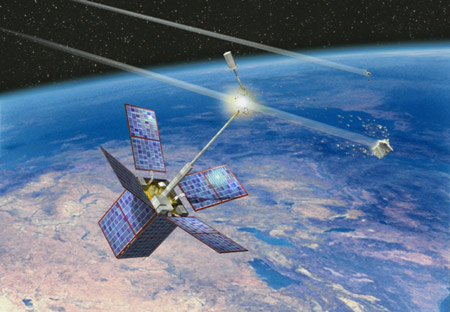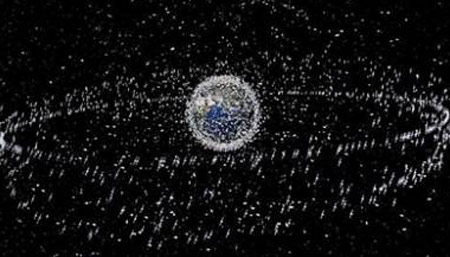The satellite crashed each other to threaten the universe
Tens of thousands of debris from a collision between two Russian and American satellites is flying in space at breakneck speed, threatening the safety of satellites in nearby orbits.

Artwork collides between a piece of trash with a satellite antenna.Photo: cnes.fr.
The accident happened earlier on 10/2 at an altitude of 790 km in the sky of Siberia, between a satellite of the Iridium company (USA) and Russia's Cosmos-2251 military telecommunications satellite. The 560 kg Iridium satellite is still active, while Kosmos-2251 has a volume of nearly one ton launched in 1993 and has been inactive since 1995.
A leading Russian space expert confirmed that the US Aerospace Agency (NASA) is responsible for the incident because it does not warn of the risk of collisions. But American experts blame the Russian side for the first time in the history of conquering this space.
Elizabeth Mailander, representative of Iridium, said the company had 65 satellites in orbit and could change its orbit if it received a warning about the risk of collisions. But no warning has been issued since February 10. General Alexander Yakushin, chief of staff of the Russian armed forces, said that no one knew exactly the number of fragments caused by the collision, but they were wandering at an altitude of 500 to 1,300 km. with the ground.
According to Nicholas Johnson, director of NASA's orbit waste program, space garbage experts will meet next week during a UN conference in Vienna (Austria) to discuss effective solutions. more effective in preventing similar accidents.

Illustrated cosmic garbage and dead satellites around the Earth.Photo: AFP.
Igor Lisov, a famous Russian aerospace expert, said he did not understand why the NASA and Iridium companies did not stop the collision, since the Iridium satellite was operating and the fund Its direction is subject to change.
'It could be a computer or human error. It is also possible that NASA experts only pay attention to the smaller types of garbage that ignore the inactive satellites , "Igor said. But the tracking of inactive satellites is the responsibility of the Space Monitoring Network - part of the US Department of Defense.
The top priority of the Space Monitoring Network is to protect astronauts. Therefore, they only give a warning if they detect a danger to an international space station or a manned spacecraft.
There are about 800-1,000 satellites operating in orbit and approximately 17,000 debris and dead satellites. That number is so large that the Network of Space Monitoring does not have enough manpower and equipment to monitor.
Igor Lisov believes that the debris could hit hundreds of satellites operating in the same orbit with two distressed satellites. According to experts from the US and Russia, they can travel at about 200 m / sec but it is difficult to jeopardize the ISS international space station and 3 astronauts working on it.
According to expert Igor Lisov, satellites using nuclear energy that have stopped operating at higher orbits are also at risk of collisions. If one of those satellites collides with the debris, the nuclear radiation will be released but does not endanger the earth. However, debris from the collision could threaten other satellites.
- China launched satellite research into reproduction in the universe
- US military satellite fragments threaten the spacecraft
- Shooting NASA satellite images is falling in the universe
- NASA satellite crashed into the Pacific Ocean and went missing
- US warns of satellite collision risk in the universe
- Supernova implants a seed for the universe
- Eclipse image from the universe
- Satellite launch for 300 USD
- For the first time in history, two satellites crashed
- 9 suitable places to find extraterrestrial life
- Go on the road to find out what shield protects humanity
- Vietnam micro satellites make the first signal from the universe
 Van Allen's belt and evidence that the Apollo 11 mission to the Moon was myth
Van Allen's belt and evidence that the Apollo 11 mission to the Moon was myth The levels of civilization in the universe (Kardashev scale)
The levels of civilization in the universe (Kardashev scale) Today Mars, the sun and the Earth are aligned
Today Mars, the sun and the Earth are aligned The Amazon owner announced a secret plan to build a space base for thousands of people
The Amazon owner announced a secret plan to build a space base for thousands of people